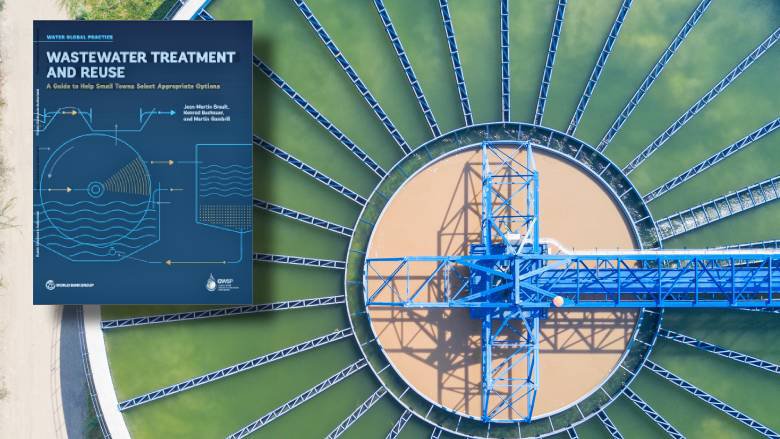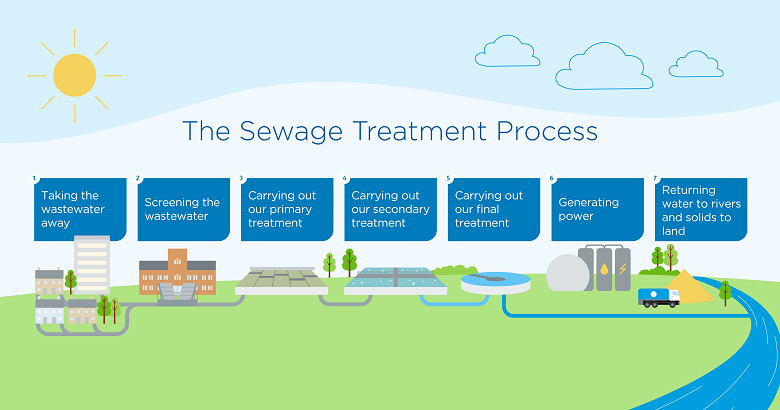Cutting-edge Strategies to Waste Water Treatment Technologies
Cutting-edge Strategies to Waste Water Treatment Technologies
Blog Article
Optimizing Drainage Treatment Processes: Strategies for Improved Water Quality and Source Recovery
In the world of wastewater treatment, the pursuit for boosting efficiency and sustainability with process optimization is a recurring pursuit that holds enormous importance. From sophisticated innovations to cutting-edge source recovery approaches, the landscape of wastewater therapy is advancing rapidly.
Significance of Process Optimization
Maximizing drainage treatment processes via thorough procedure optimization is critical for making the most of effectiveness and making certain environmental sustainability. By fine-tuning each action of the therapy procedure, from preliminary intake to last discharge, water therapy centers can accomplish higher degrees of contaminant removal, reduce energy usage, and reduce the generation of waste by-products. Refine optimization entails examining crucial performance indications, such as hydraulic retention times, sludge retention times, and nutrient levels, to identify locations for renovation and implement targeted services.
Reliable procedure optimization not only improves the overall efficiency of waste water therapy plants however likewise adds to cost savings and governing compliance. By optimizing procedures, drivers can attain greater treatment capacities without the need for substantial facilities investments. Furthermore, enhanced treatment effectiveness results in cleaner effluent discharge, minimizing the environmental influence on obtaining water bodies and environments.

Advanced Treatment Technologies
In the world of waste water therapy, the application of innovative treatment technologies plays a pivotal function in enhancing the general performance and efficiency of the treatment processes. These cutting-edge modern technologies offer innovative remedies to deal with complicated contaminants existing in wastewater streams, ensuring the elimination of pollutants to satisfy rigorous water top quality criteria. Advanced treatment processes such as membrane layer bioreactors, ozonation, progressed oxidation processes, and reverse osmosis allow the thorough removal of contaminants, including emerging pollutants like drugs and personal treatment items.
Additionally, these technologies facilitate source healing by drawing out important products such as phosphorus, nitrogen, and power from the wastewater. Advanced nutrient removal innovations can recuperate phosphorus and nitrogen for reuse in farming fertilizers, while energy recovery systems like anaerobic food digestion can harness biogas for electrical power generation. By integrating innovative treatment innovations right into wastewater therapy plants, operators can enhance water top quality, decrease ecological effect, and move in the direction of a much more resource-efficient and sustainable method to wastewater monitoring.
Resource Recuperation Techniques
Source healing strategies in wastewater therapy procedures play an important role in making the most of the application of useful sources contained within wastewater streams. One usual source healing strategy is the removal of nutrients like phosphorus and nitrogen from wastewater for reuse as fertilizers or in industrial procedures.
Water recuperation methods, such as membrane innovations and progressed purification systems, enable the therapy and reuse of water for non-potable applications like watering or commercial procedures. By applying resource healing strategies in wastewater treatment plants, not only can important resources be preserved and recycled, however the overall sustainability and effectiveness of the therapy process can be significantly enhanced. As the concentrate on resource deficiency and environmental sustainability proceeds to grow, the importance of incorporating resource recuperation methods into wastewater treatment processes comes to be increasingly apparent.
Lasting Practices in Wastewater Treatment
Lasting techniques in wastewater therapy include an array of approaches intended at reducing the ecological impact of therapy processes while making the most of source healing. One key element of sustainable wastewater therapy is the application of energy-efficient innovations to decrease the carbon footprint of treatment plants.
Additionally, the adoption of sophisticated therapy technologies that advertise water reuse and recycling plays a vital duty in sustainable wastewater administration. By dealing with wastewater to a high requirement, it can be repurposed for various non-potable applications, such as watering, industrial processes, and also potable water manufacturing in some cases. This not only conserves valuable freshwater resources but additionally minimizes the quantity of effluent discharged right into the setting.

Study on Effective Optimization
As wastewater treatment facilities increasingly concentrate on lasting techniques, real-world instance research studies showcasing successful optimization strategies act as vital models for market innovation. One such instance research study rotates around the implementation of sophisticated nutrient removal modern technologies in a local wastewater therapy plant. By incorporating organic nutrient elimination procedures and enhancing operational specifications, the facility accomplished considerable reductions in nitrogen and phosphorus levels discharged into obtaining waters, eventually boosting total water high quality.
Another noteworthy situation study entails the assimilation of anaerobic food digestion systems in an industrial wastewater therapy plant to enhance check out here power recovery and source efficiency (Waste Water Treatment). Through the food digestion of natural waste products, the facility not only produced biogas for power manufacturing but additionally decreased the volume of sludge requiring disposal. This twin benefit not only enhanced the plant's sustainability performance but likewise resulted in cost savings
These effective optimization strategies show the capacity for wastewater therapy facilities to accomplish both economic and environmental benefits via cutting-edge techniques and reliable procedures. By gaining from go to this web-site these situation researches, industry specialists can better maximize their own operations to boost water quality and source healing.
Final Thought
To conclude, optimizing drainage treatment processes via sophisticated modern technologies, source recuperation techniques, and lasting techniques is important for enhancing water high quality and maximizing source healing. Waste Water Treatment. Case researches have actually demonstrated successful execution of optimization methods in numerous wastewater therapy centers. By continuing to focus on process optimization, we can guarantee effective and reliable treatment of wastewater, eventually resulting in a more ecologically friendly and sustainable approach to managing water resources
By fine-tuning each action of the therapy procedure, from preliminary consumption to final discharge, water treatment centers can accomplish greater levels of impurity elimination, minimize energy consumption, and minimize the generation of waste byproducts.In the realm of waste water treatment, the execution of sophisticated therapy technologies plays a critical duty in boosting the general effectiveness and efficiency of the therapy processes. By incorporating sophisticated treatment modern technologies into wastewater treatment plants, drivers can boost water top go now quality, decrease ecological influence, and move in the direction of a more resource-efficient and sustainable method to wastewater monitoring.
By carrying out resource recuperation methods in wastewater treatment plants, not just can beneficial sources be conserved and recycled, but the overall sustainability and effectiveness of the treatment procedure can be substantially improved. Lasting practices in wastewater treatment encompass a variety of methods intended at minimizing the ecological impact of therapy procedures while making the most of source healing.
Report this page